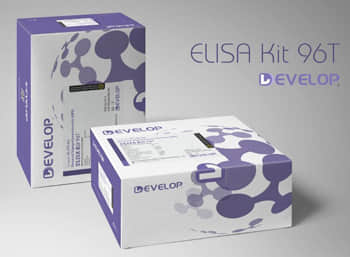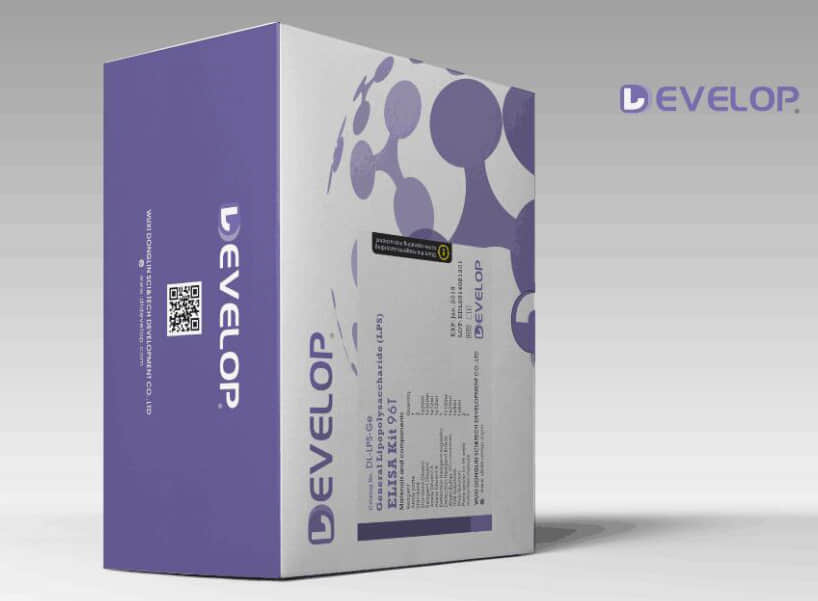Human Splicing Factor Proline And Glutamine Rich (SFPQ) ELISA Kit


two product lines: Traditional ELISA Kit and Ready-to-Use ELISA Kit.


Other names:Polypyrimidine tract-binding protein-associated-splicing factor(PSF;PTB-associated-splicing factor); 100 kDa DNA-pairing protein(hPOMp100); DNA-binding p52/p100 complex, 100 kDa subunit
Function: DNA- and RNA binding protein, involved in several nuclear processes. Essential pre-mRNA splicing factor required early in spliceosome formation and for splicing catalytic step II, probably as an heteromer with NONO. Binds to pre-mRNA in spliceosome C complex, and specifically binds to intronic polypyrimidine tracts. Interacts with U5 snRNA, probably by binding to a purine-rich sequence located on the 3' side of U5 snRNA stem 1b. May be involved in a pre-mRNA coupled splicing and polyadenylation process as component of a snRNP-free complex with SNRPA/U1A. The SFPQ-NONO heteromer associated with MATR3 may play a role in nuclear retention of defective RNAs. SFPQ may be involved in homologous DNA pairing; in vitro, promotes the invasion of ssDNA between a duplex DNA and produces a D-loop formation. The SFPQ-NONO heteromer may be involved in DNA unwinding by modulating the function of topoisomerase I/TOP1; in vitro, stimulates dissociation of TOP1 from DNA after cleavage and enhances its jumping between separate DNA helices. The SFPQ-NONO heteromer may be involved in DNA nonhomologous end joining (NHEJ) required for double-strand break repair and V(D)J recombination and may stabilize paired DNA ends; in vitro, the complex strongly stimulates DNA end joining, binds directly to the DNA substrates and cooperates with the Ku70/G22P1-Ku80/XRCC5 (Ku) dimer to establish a functional preligation complex. SFPQ is involved in transcriptional regulation. Transcriptional repression is probably mediated by an interaction of SFPQ with SIN3A and subsequent recruitment of histone deacetylases (HDACs). The SFPQ-NONO/SF-1 complex binds to the CYP17 promoter and regulates basal and cAMP-dependent transcriptional avtivity. SFPQ isoform Long binds to the DNA binding domains (DBD) of nuclear hormone receptors, like RXRA and probably THRA, and acts as transcriptional corepressor in absence of hormone ligands. Binds the DNA sequence 5'-CTGAGTC-3' in the insulin-like growth factor response element (IGFRE) and inhibits IGF-I-stimulated transcriptional activity.
Sequence:
10 20 30 40 50 MSRDRFRSRG GGGGGFHRRG GGGGRGGLHD FRSPPPGMGL NQNRGPMGPG 60 70 80 90 100 PGQSGPKPPI PPPPPHQQQQ QPPPQQPPPQ QPPPHQPPPH PQPHQQQQPP 110 120 130 140 150 PPPQDSSKPV VAQGPGPAPG VGSAPPASSS APPATPPTSG APPGSGPGPT 160 170 180 190 200 PTPPPAVTSA PPGAPPPTPP SSGVPTTPPQ AGGPPPPPAA VPGPGPGPKQ 210 220 230 240 250 GPGPGGPKGG KMPGGPKPGG GPGLSTPGGH PKPPHRGGGE PRGGRQHHPP 260 270 280 290 300 YHQQHHQGPP PGGPGGRSEE KISDSEGFKA NLSLLRRPGE KTYTQRCRLF 310 320 330 340 350 VGNLPADITE DEFKRLFAKY GEPGEVFINK GKGFGFIKLE SRALAEIAKA 360 370 380 390 400 ELDDTPMRGR QLRVRFATHA AALSVRNLSP YVSNELLEEA FSQFGPIERA 410 420 430 440 450 VVIVDDRGRS TGKGIVEFAS KPAARKAFER CSEGVFLLTT TPRPVIVEPL 460 470 480 490 500 EQLDDEDGLP EKLAQKNPMY QKERETPPRF AQHGTFEYEY SQRWKSLDEM 510 520 530 540 550 EKQQREQVEK NMKDAKDKLE SEMEDAYHEH QANLLRQDLM RRQEELRRME 560 570 580 590 600 ELHNQEMQKR KEMQLRQEEE RRRREEEMMI RQREMEEQMR RQREESYSRM 610 620 630 640 650 GYMDPRERDM RMGGGGAMNM GDPYGSGGQK FPPLGGGGGI GYEANPGVPP 660 670 680 690 700 ATMSGSMMGS DMRTERFGQG GAGPVGGQGP RGMGPGTPAG YGRGREEYEG PNKKPRF
INTENDED USE
The kit is a sandwich enzyme immunoassay for the in vitro quantitative measurement of SFPQ in human serum, plasma, tissue homogenates or other biological fluids.
DETECTION RANGE
0.156-10ng/mL. The standard curve concentrations used for the ELISA’s were 10ng/mL, 5ng/mL, 2.5ng/mL, 1.25ng/mL, 0.625ng/mL, 0.312ng/mL, 0.156ng/mL.
SENSITIVITY
The minimum detectable dose of SFPQ is typically less than 0.051ng/mL.
The sensitivity of this assay, or Lower Limit of Detection (LLD) was defined as the lowest protein concentration that could be differentiated from zero. It was determined by adding two standard deviations to the mean optical density value of twenty zero standard replicates and calculating the corresponding concentration.
SPECIFICITY
This assay has high sensitivity and excellent specificity for detection of SFPQ.
No significant cross-reactivity or interference between SFPQ and analogues was observed.
You can reference link of the kit as following
https://dldevelop.com/Research-reagent/dl-sfpq-hu.html
https://www.dldevelop.com/uploadfile/data/DL-SFPQ-Hu.pdf
Introduction
| Item | Standard | Test | |
| Description |
The kit is a sandwich enzyme immunoassay for the in vitro quantitative measurement of SFPQ in Human serum, plasma, tissue homogenates or other biological fluids. |
Conform | |
| Identification | Colorimetric | Positive | |
| Composition | Traditional ELISA Kit | Ready-to-Use ELISA KIT | Conform |
| Pre-coated, ready to use 96-well strip plate 1 | Pre-coated, ready to use 96-well strip plate 1 | ||
| Plate sealer for 96 wells 2 | Plate sealer for 96 wells 2 | ||
| Standard 2 | Standard 2 | ||
| Diluents buffer 1×45mL | Standard Diluent 1×20mL | ||
| Detection Reagent A 1×120μL | Detection Solution A 1×12mL | ||
| Detection Reagent B 1×120μL | Detection Solution B 1×12mL | ||
| TMB Substrate 1×9mL | TMB Substrate 1×9mL | ||
| Stop Solution 1×6mL | Stop Solution 1×6mL | ||
| Wash Buffer (30 × concentrate) 1×20mL | Wash Buffer (30 × concentrate) 1×20mL | ||
| Instruction manual 1 | Instruction manual 1 | ||
Test principle
The microtiter plate provided in this kit has been pre-coated with an antibody specific to the index. Standards or samples are then added to the appropriate microtiter plate wells with a biotin-conjugated antibody preparation specific to the index. Next, Avidin conjugated to Horseradish Peroxidase (HRP) is added to each microplate well and incubated. After TMB substrate solution is added, only those wells that contain the index, biotin-conjugated antibody and enzyme-conjugated Avidin will exhibit a change in color. The enzyme-substrate reaction is terminated by the addition of sulphuric acid solution and the color change is measured spectrophotometrically at a wavelength of 450nm ± 10nm. The concentration of the index in the samples is then determined by comparing the O.D. of the samples to the standard curve.
Recovery
Matrices listed below were spiked with certain level of recombinant SFPQ and the recovery rates were calculated by comparing the measured value to the expected amount of the index in samples.
| Matrix | Recovery range (%) | Average(%) |
| serum(n=5) | 81-93 | 86 |
| EDTA plasma(n=5) | 80-97 | 88 |
| heparin plasma(n=5) | 90-101 | 95 |
Linearity
The linearity of the kit was assayed by testing samples spiked with appropriate concentration of the index and their serial dilutions. The results were demonstrated by the percentage of calculated concentration to the expected.
| Sample | 1:2 | 1:4 | 1:8 | 1:16 |
| serum(n=5) | 82-96% | 83-98% | 81-99% | 93-101% |
| EDTA plasma(n=5) | 88-101% | 86-95% | 90-102% | 80-93% |
| heparin plasma(n=5) | 80-91% | 82-90% | 95-104% | 79-95% |
Precision
Intra-assay Precision (Precision within an assay): 3 samples with low, middle and high level the index were tested 20 times on one plate, respectively.
Inter-assay Precision (Precision between assays): 3 samples with low, middle and high level the index were tested on 3 different plates, 8 replicates in each plate.
CV(%) = SD/meanX100
Intra-Assay: CV<10%
Inter-Assay: CV<12%
Stability
The stability of ELISA kit is determined by the loss rate of activity. The loss rate of this kit is less than 5% within the expiration date under appropriate storage conditions.
Note:
To minimize unnecessary influences on the performance, operation procedures and lab conditions, especially room temperature, air humidity and incubator temperatures should be strictly regulated. It is also strongly suggested that the whole assay is performed by the same experimenter from the beginning to the end.
Assay procedure summary
1. Prepare all reagents, samples and standards;
2. Add 100µL standard or sample to each well. Incubate 2 hours at 37℃;
3. Aspirate and add 100µL prepared Detection Reagent A. Incubate 1 hour at 37℃;
4. Aspirate and wash 3 times;
5. Add 100µL prepared Detection Reagent B. Incubate 1 hour at 37℃;
6. Aspirate and wash 5 times;
7. Add 90µL Substrate Solution. Incubate 15-25 minutes at 37℃;
8. Add 50µL Stop Solution. Read at 450nm immediately.
Order or get a Quote
We will reply you within 24 hours!














